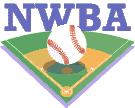|
|
|
Note: You must be registered in order to post a reply.
To register, click here. Registration is FREE!
|
| T O P I C R E V I E W |
| Rapid |
Posted - 10/22/2018 : 07:59:49
Arm Care. Itís a term that has become extremely popular with baseball training, and some form of arm care is in every program we write at Rapid Sports Performance. While most people consider arm care to be a routine of banded shoulder exercises, we view arm care with a slightly broader lens. Arm care might mean a simple scapular patterning drill for player A, whereas player B might need an increase in shoulder mobility. In either situation, however, proper strengthening or use of the rotator cuff muscles is an important consideration. The shoulder joint is extremely complex and is capable of lots of movements both small and large. With this in mind, it is critical to train arm care with technique and concentration. Is the drill set up correctly? Are you feeling it in the right places? Are the ribs in a good position? Remember from previous posts of mine that the control of the ribs plays a large part in the positioning and function of the shoulder. The over arching theme of arm care is two fold: keeping the ball in/on the socket, and creating proper biomechanical movements. With this in mind, here are a few of our common arm care drills. All passwords are Rapidvideo.
https://vimeo.com/271864826
Prone ER. This is a great drill to teach the athlete how to properly execute and control external rotation of the shoulder. This movement is the ďlay backĒ phase of throwing and the athlete must therefore have great control and strength of this movement. Be sure to keep a neutral spine! In the video my head isnít down because Iím speaking, but when the drill is done be sure to keep the chin tucked. This should be felt in the back of the shoulder and shoulder blade.
https://vimeo.com/273947130
Prone trap raises are one of my favorite drills for teaching people how to get shoulder blades integrated with the arm. The scapula must go wherever the humerus (arm) goes, and it must stay flush on the rib cage. This drill trains the lower trapezius to contract and efficiently keep the scapula in a good position with the arm overhead. We tend to not use the 2-arm version in this video because of the tendency to fall into lumbar extension. However, sometimes it can help people understand how to execute the movement properly in which case I like the incline bench in the weight room. In any case though, this drill should only be felt in the lower trapezius. I like to tell people that the scapula is lifting the arm. This drill should not be felt in the shoulder.
https://vimeo.com/273945074
Ĺ kneeling internal and external rotation can be trained and strengthened with manual resistance from a partner. I tend to start people with this because I can control the resistance and I can pay attention to what the head of humerus is doing during the movement. Itís important on really any drill that the humerus does not drift up or forward in the socket too much as this can create problems over time. The ball should simply swivel in the socket. This is one of many manual resistance variations for the rotator cuff we may use. I like it because there is minimal set up and it gives people context about good movement. In either case, avoid training through pinching or pain, especially if felt in the front of the shoulder.
We hope this is helpful! Have a great week, and as always feel free to comment with questions or topic requests!
All the best,
The Rapid Team
www.go-rapid.com
Andrew Gordon, MS, CSCS
Andrew.Gordon@go-rapid.com
|
|
|
| Georgia Travel Baseball - NWBA |
© 2000-22 NWBA |
 |
|
|




